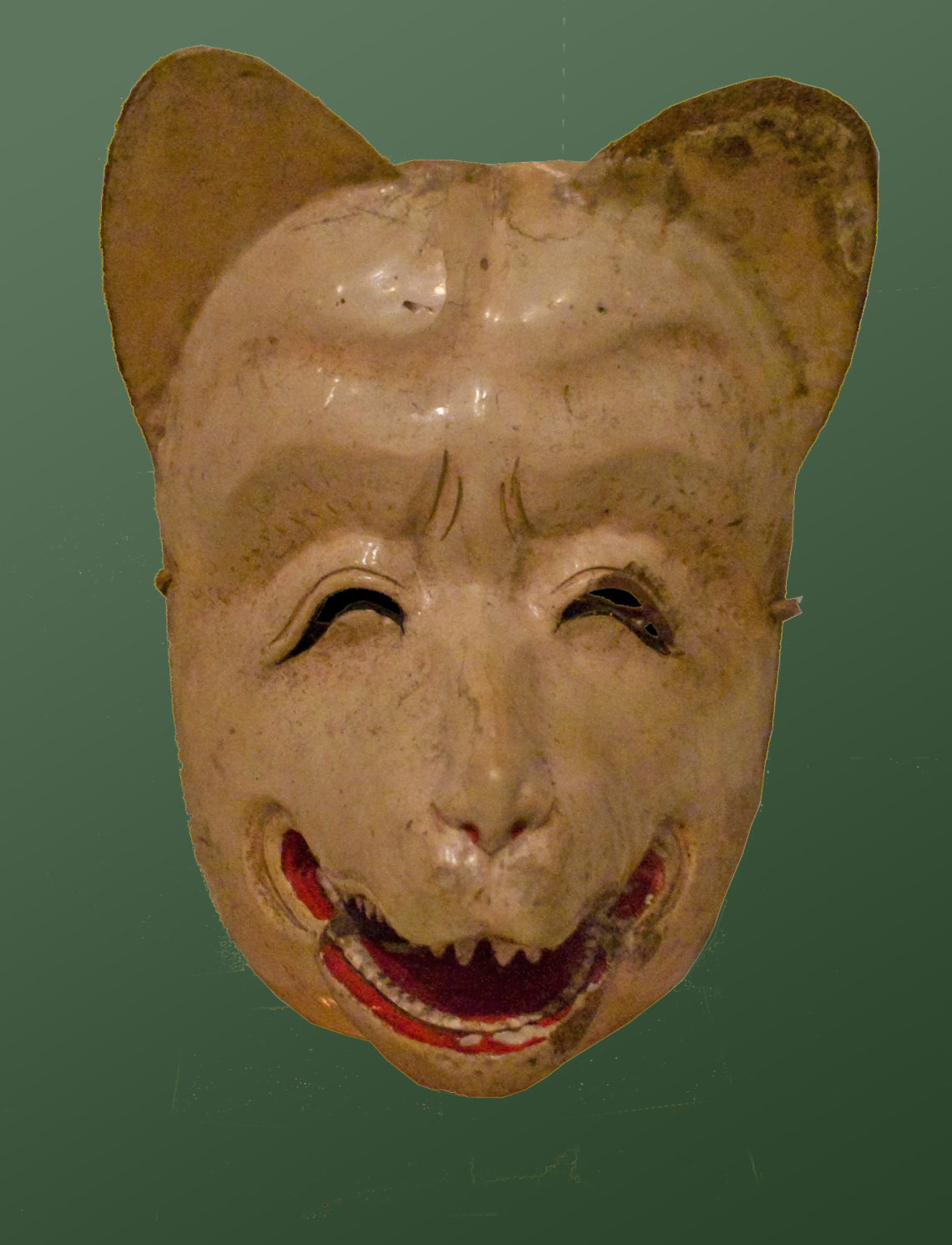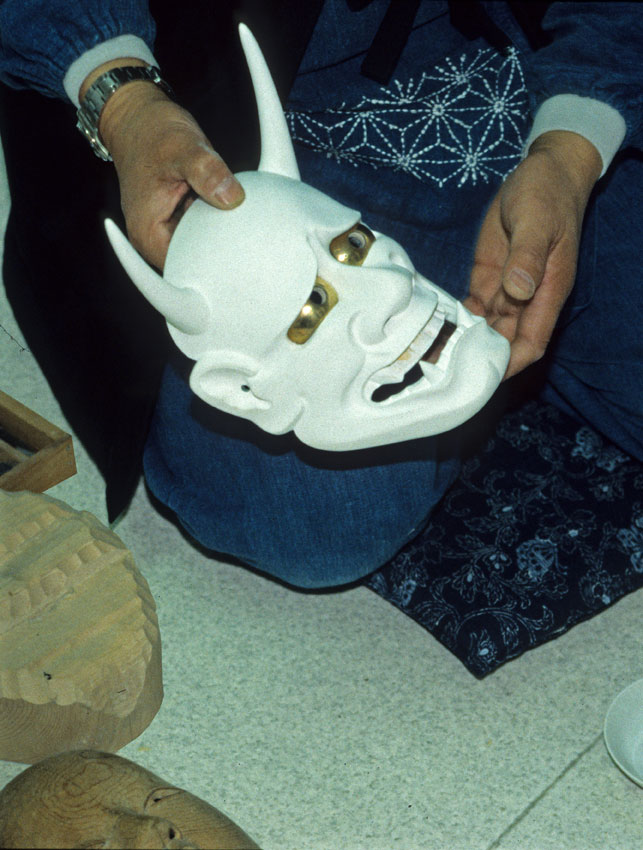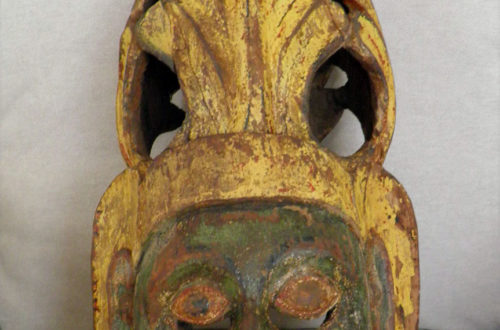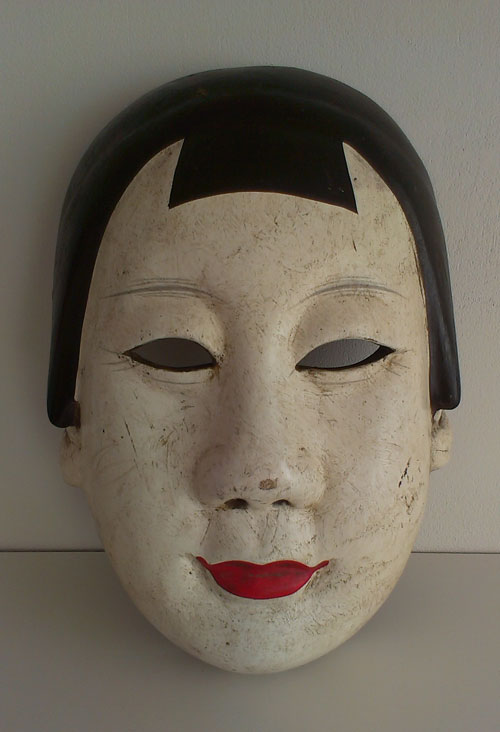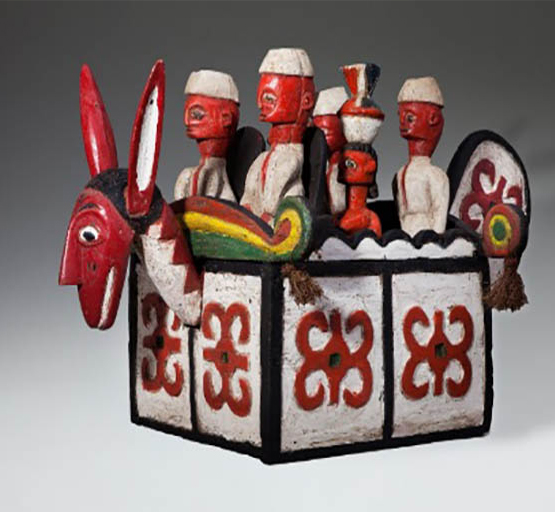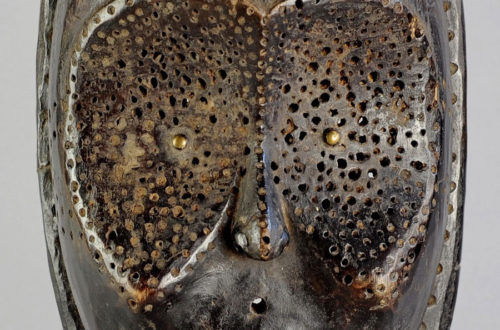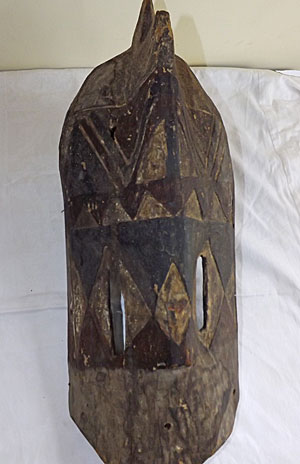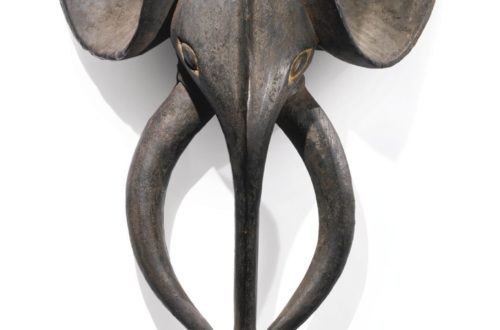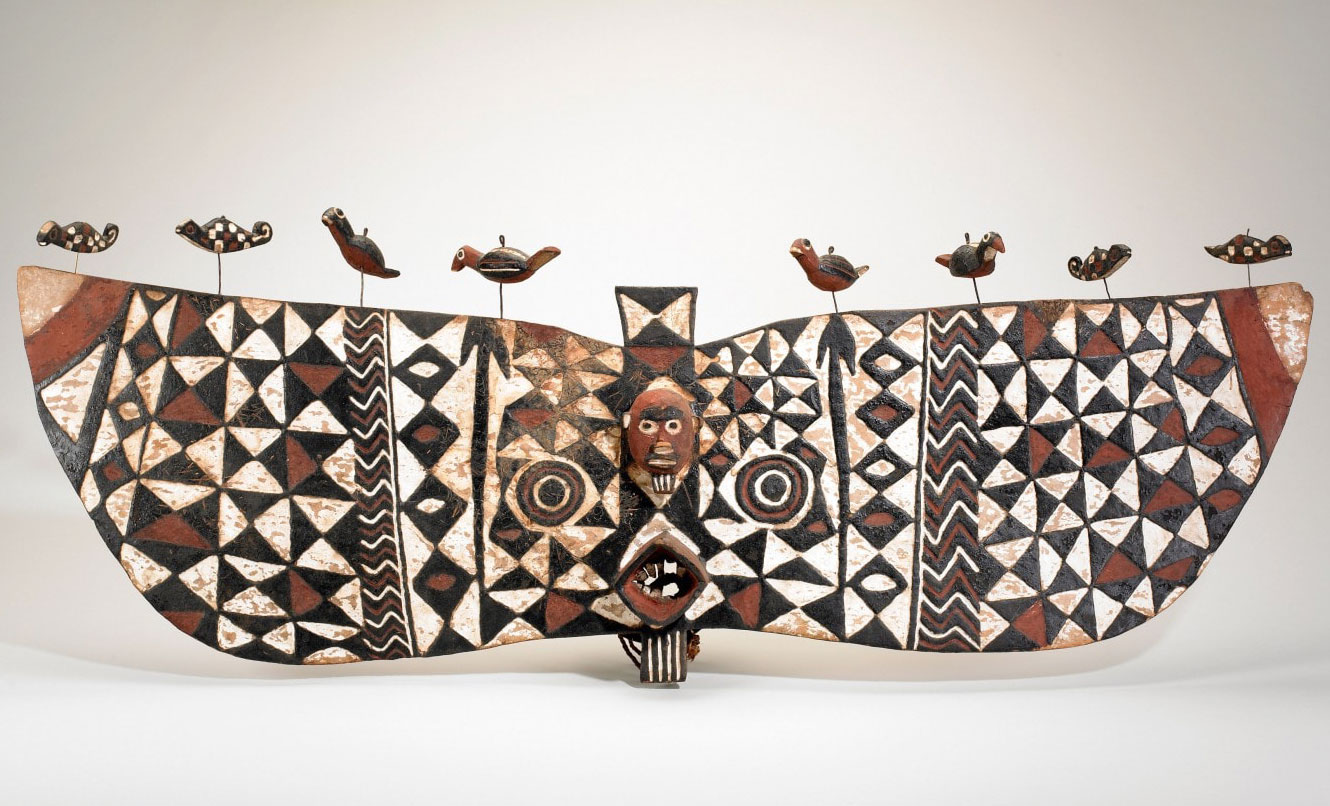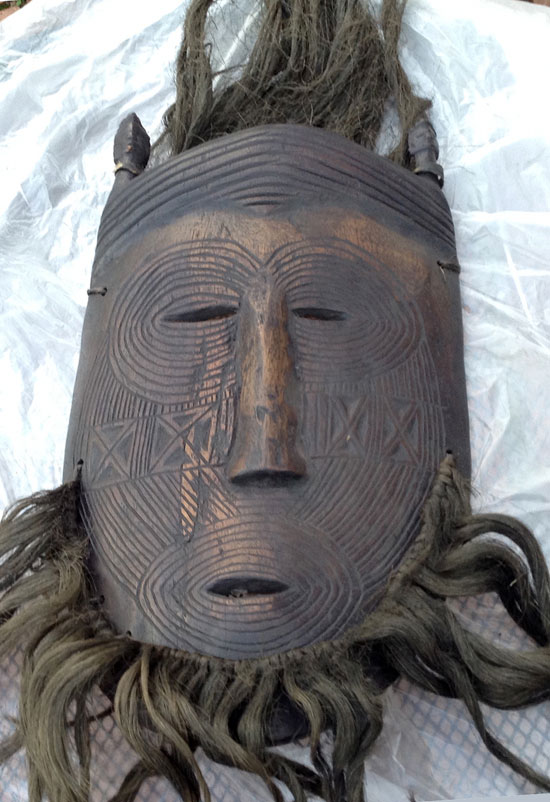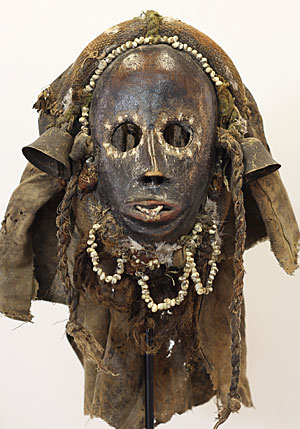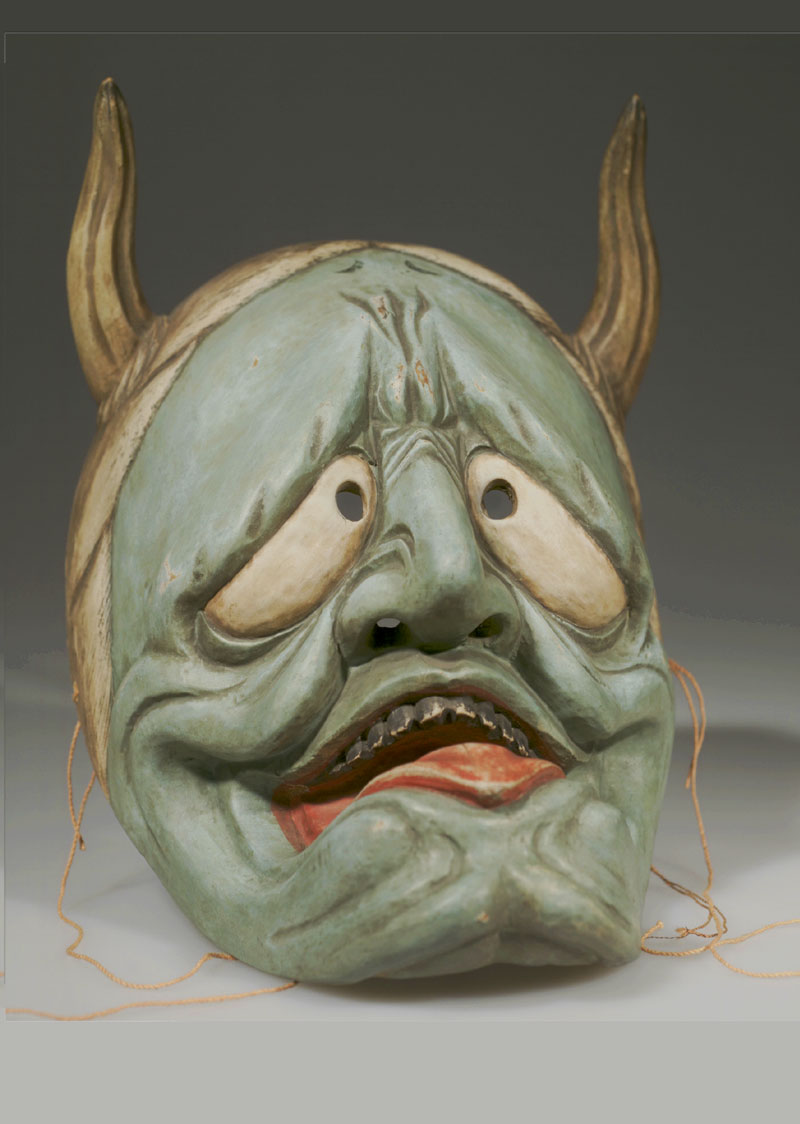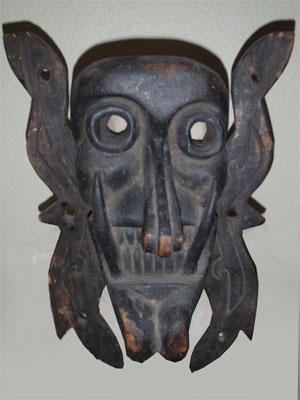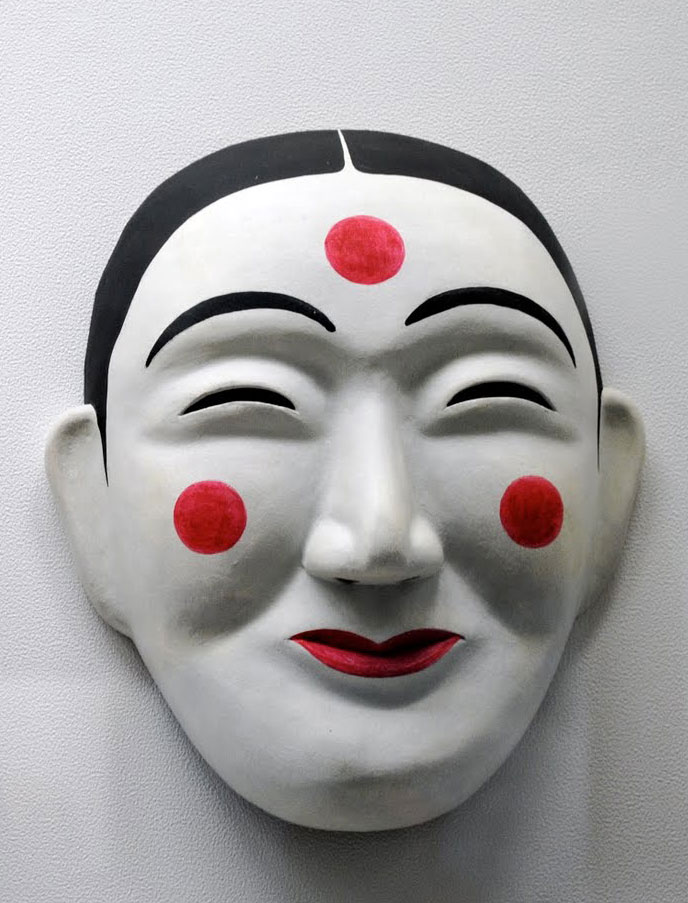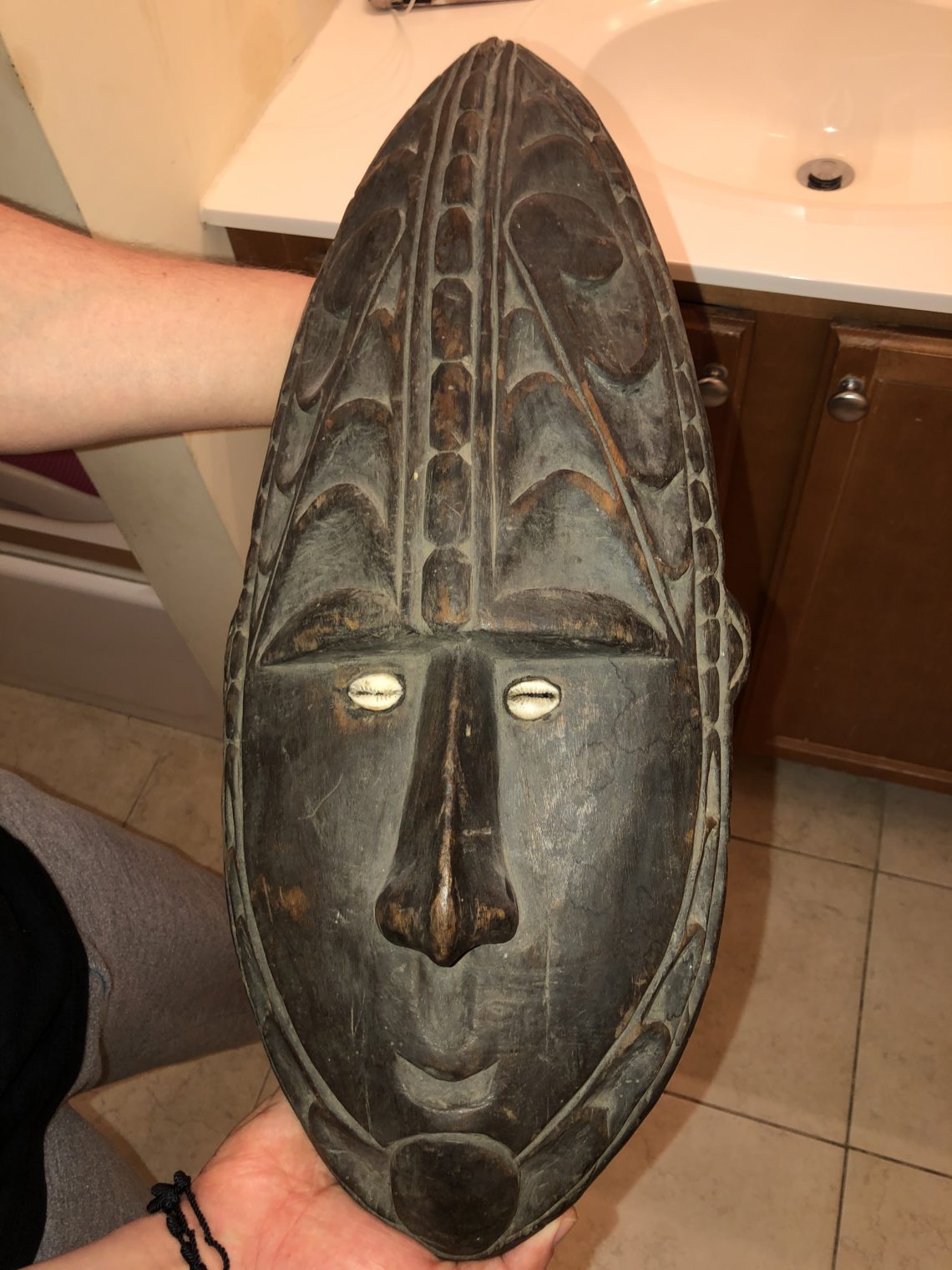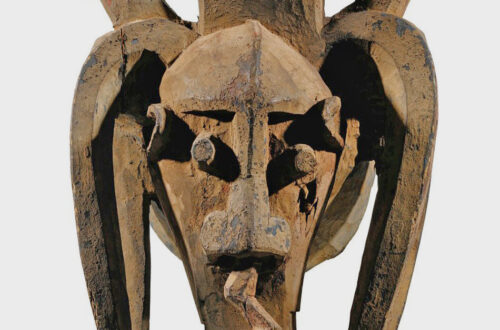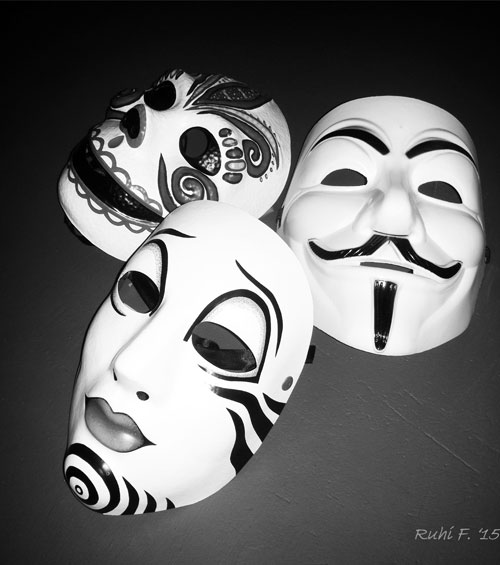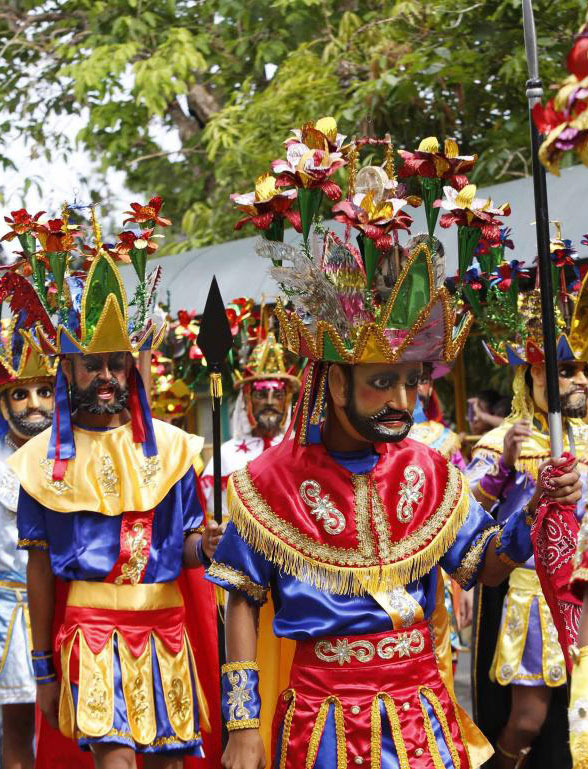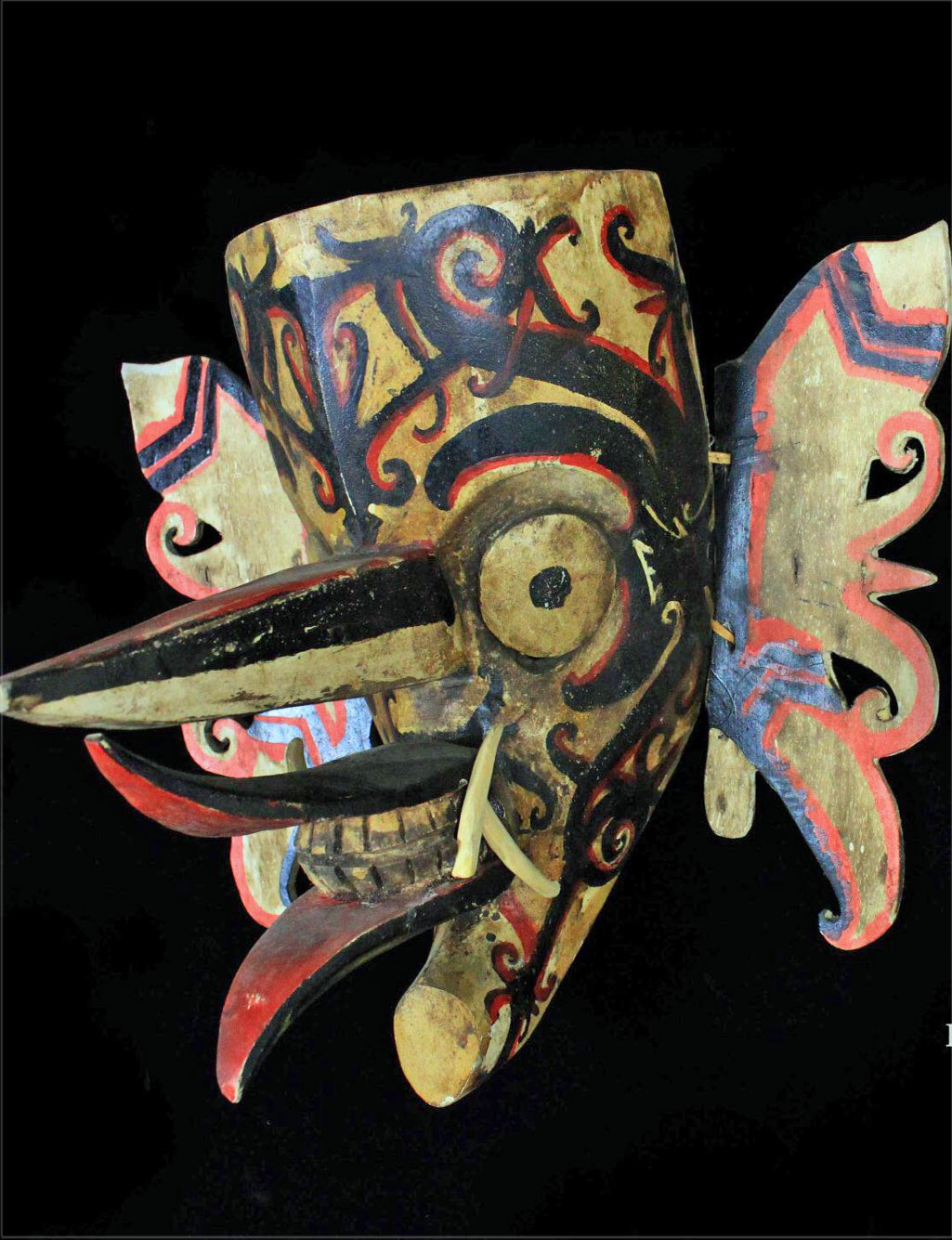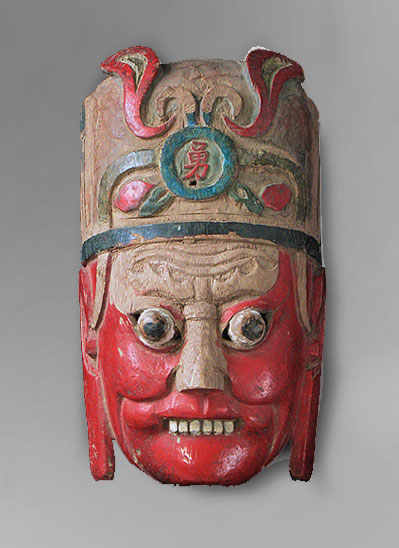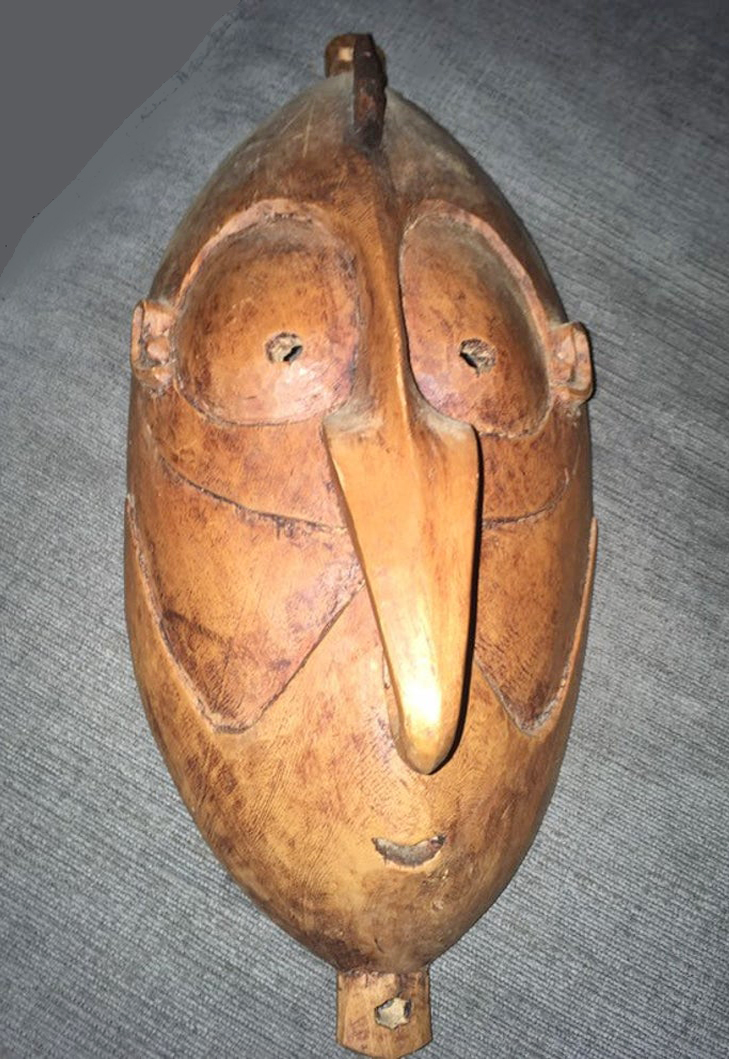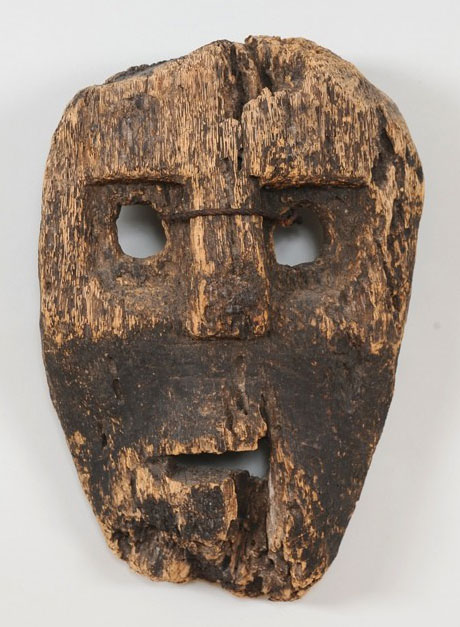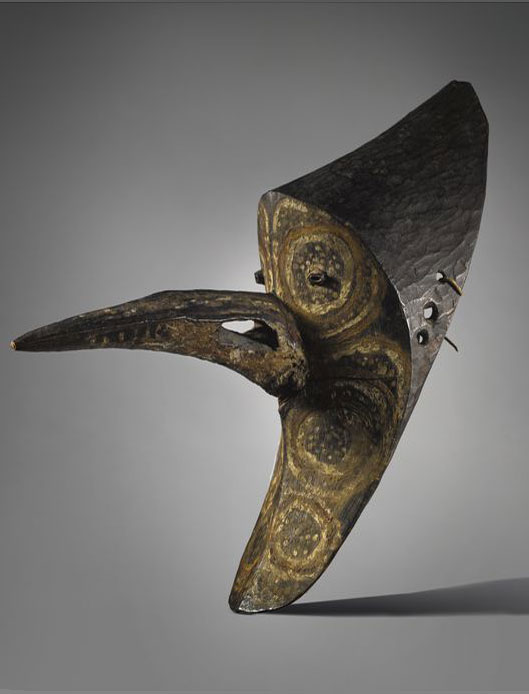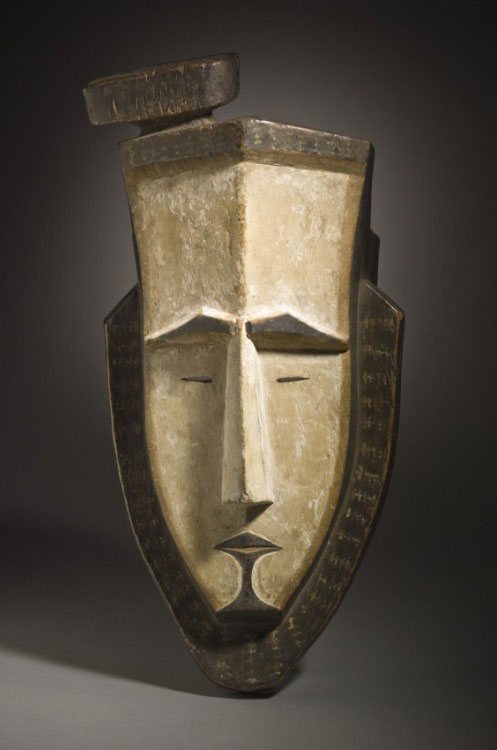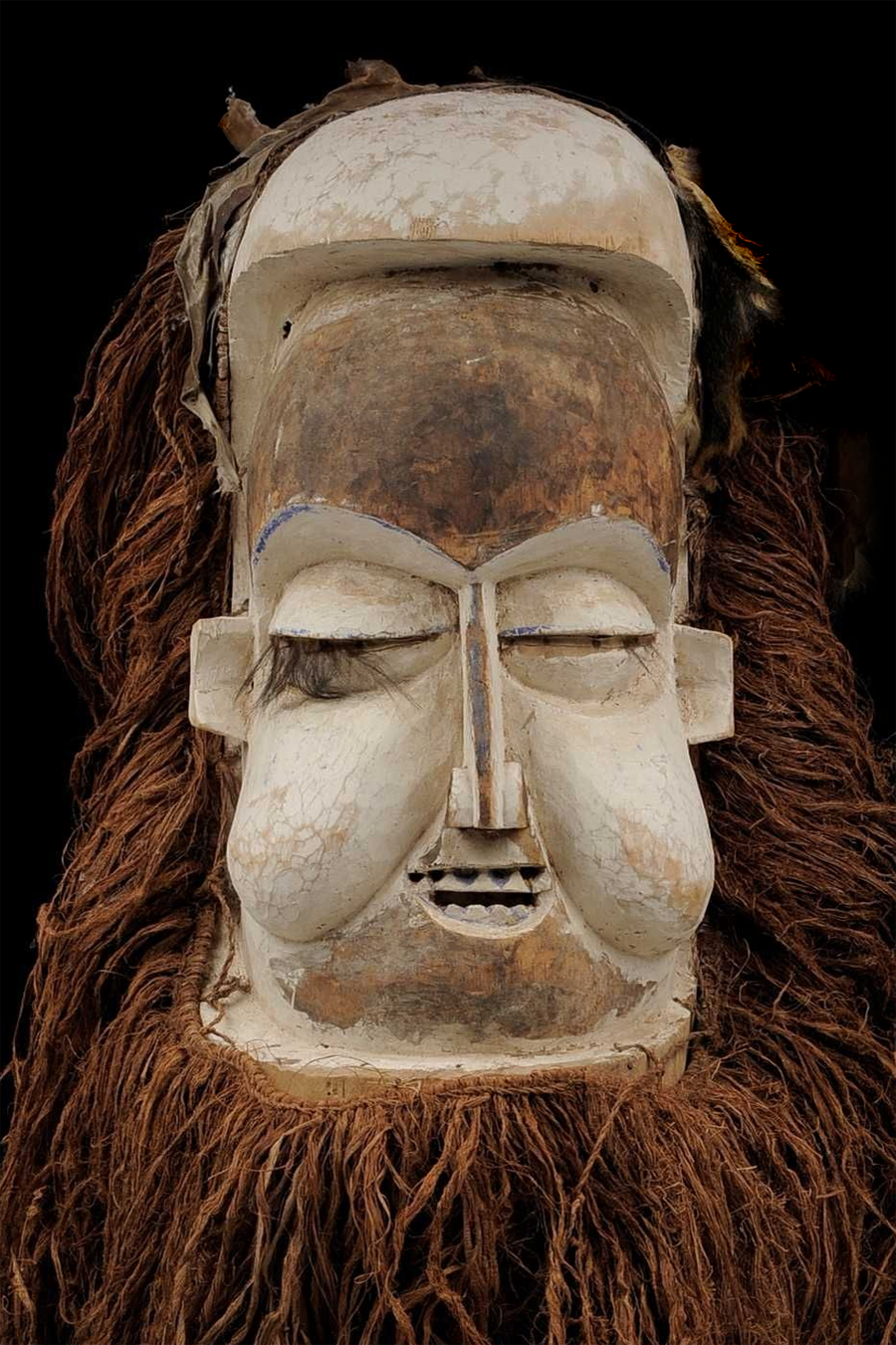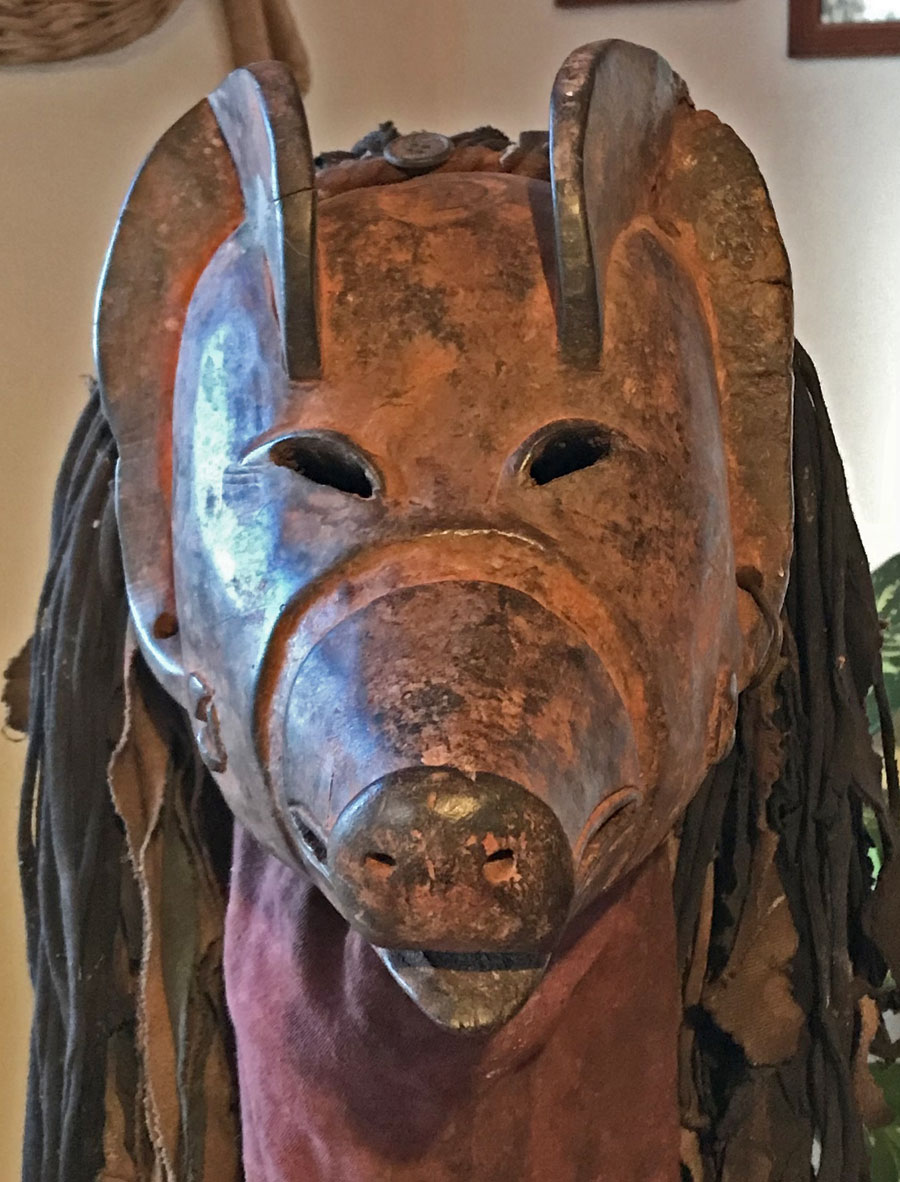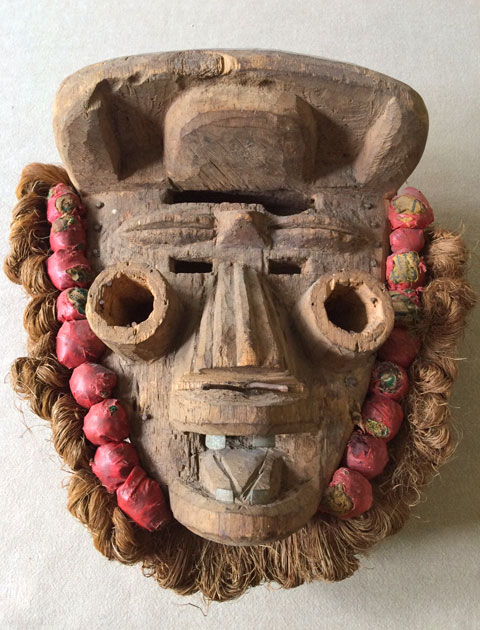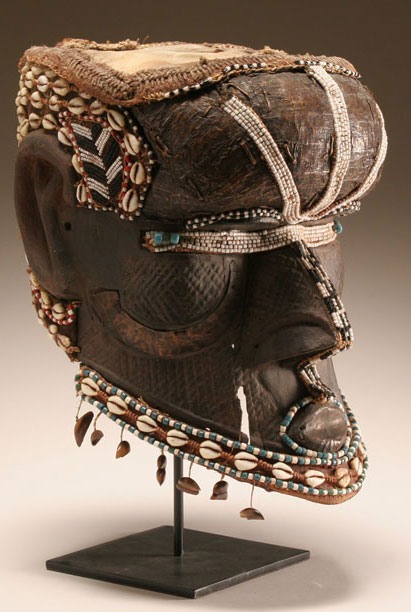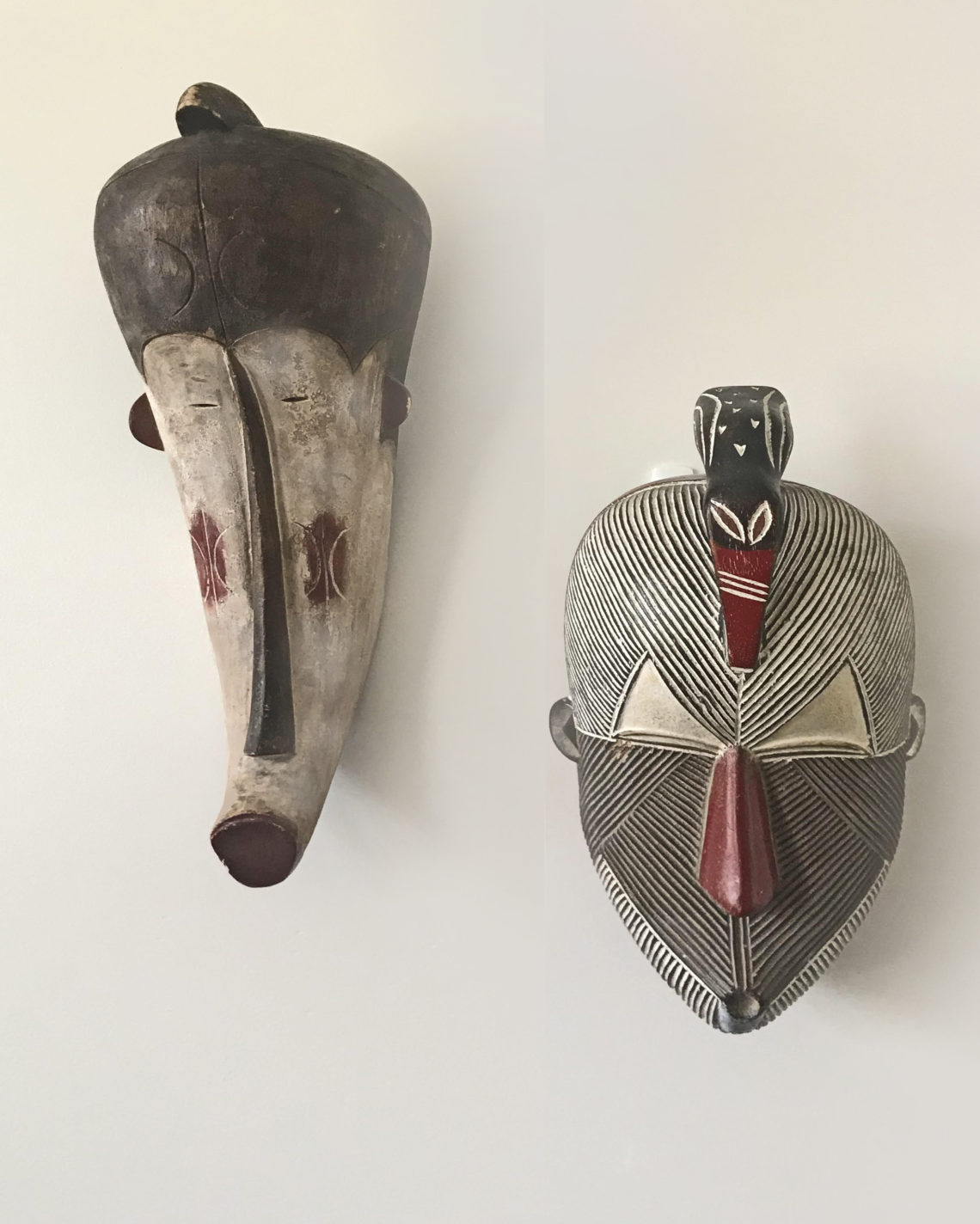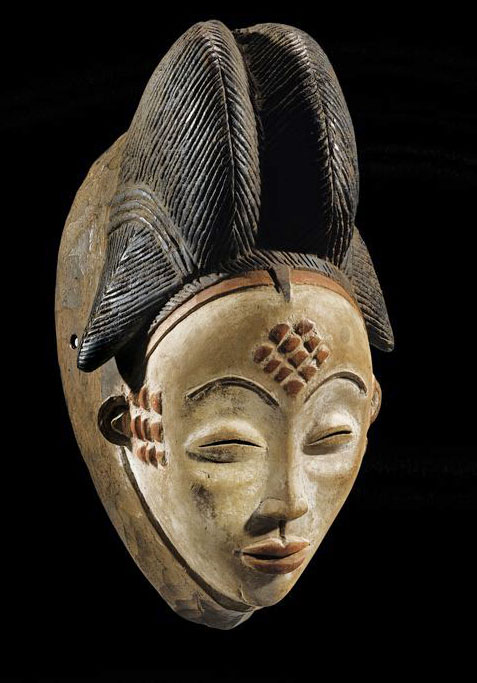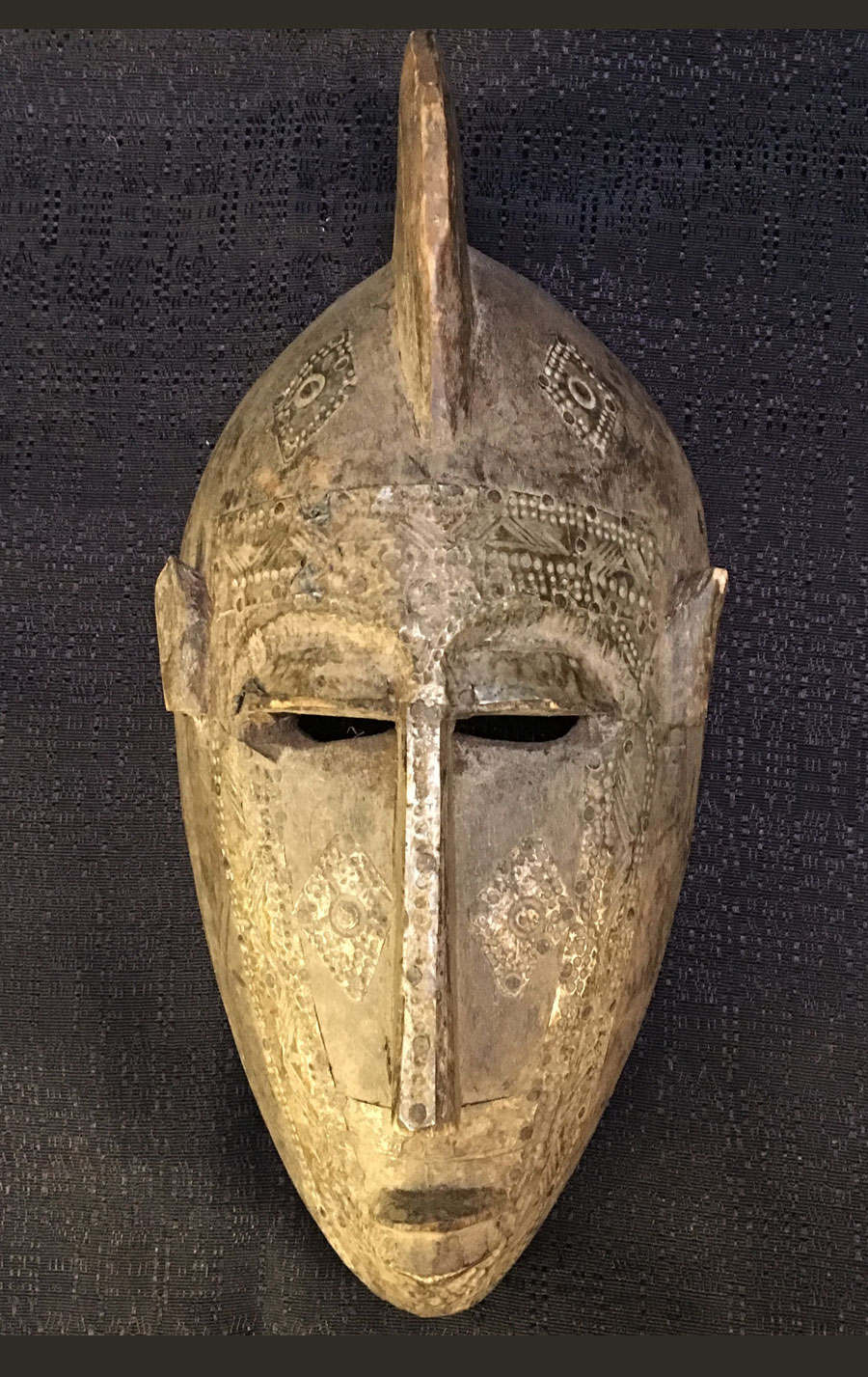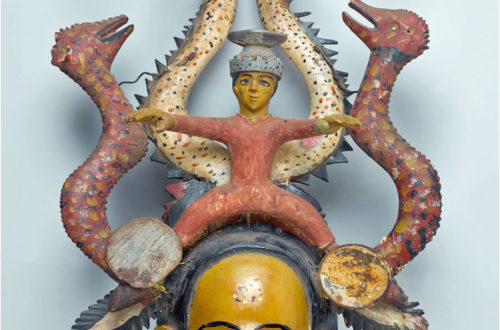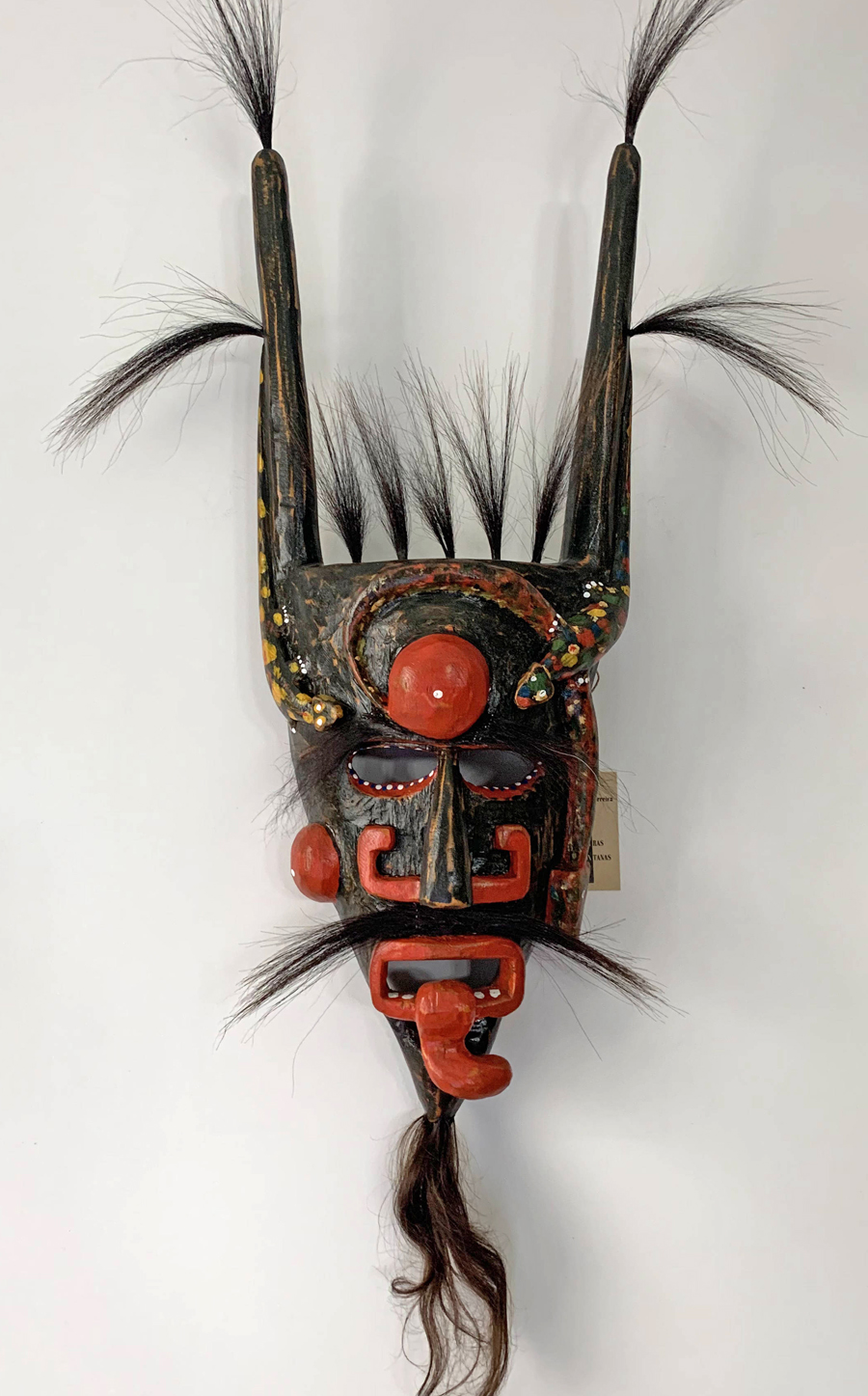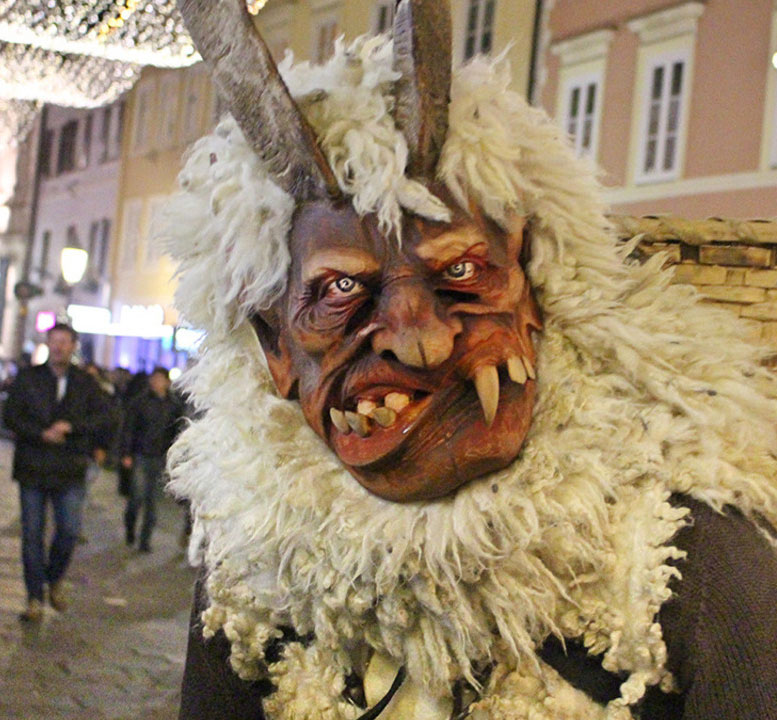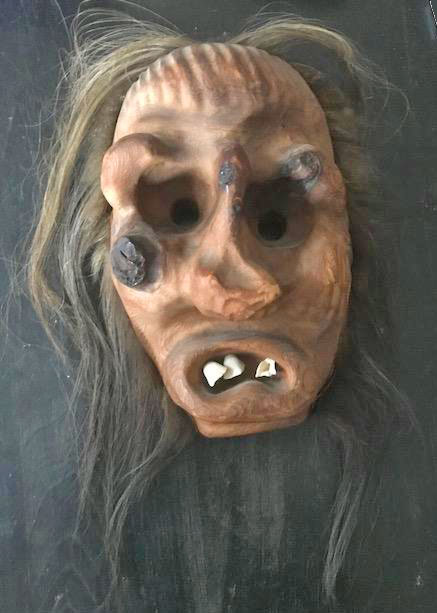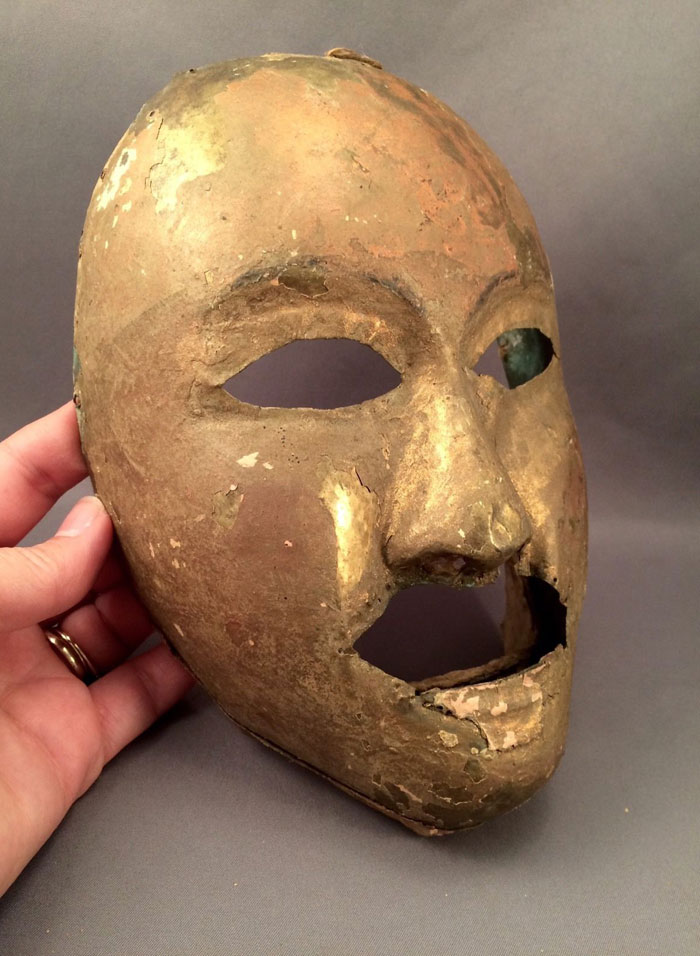Kitsune is a mask of a fox. It has meaning in religion and folk tradition. In Japanese culture foxes have a contradictory behavior. They can be good or evil, depending on the situation. Some of the Japanese Kitsune can be used for Noh, Kyōgen, Shinto and Kagura performances. Noh is classical Japanese musical drama based on tales from traditional literature performed since the 14th century. Kyōgen is a form of traditional Japanese comic performance in the theater. It was performed as an intermission between Noh acts. Shinto is an ethnic religion in Japan, and it focuses on ritual practices. Kagura is a type of Shinto theatrical dance. The first Kitsune…
-
-
Baga Simbondel headdress
Many collectors have never seen Simbondel headdresses. More likely they’ve seen Baga snake headdresses or Baga Nimba shoulder masks. Each of these magnificent sculptures are something you won’t want to miss. Sorry, the three scans are low-res and can’t be enlarged much. The Baga people of West Africa have for centuries produced monumental works despite their small population and history of subjugation. They number no more than 40,000 in all, and live in several groups of villages along a 100-mile stretch of Guinea’s coast. They have never held major political power, and have been subjugated by others, both African and European. Not a people you would think important enough for…
-
African Mystery
Q: This is rather nice. Cannot quiet pinpoint the region. Alma, 1787 A: Probably northwest African. Hard to be sure, but it looks like a Dan mask, except really primitive. This makes sense, but damned if I can find anything in the reference books or internet that looks like this. Have any of you guys seen something like this? Any suggestion in the comment box will be appreciated.
-
Tribal masks of Vietnam
The Kim Mun Lanten people of northern Vietnam and Laos traditionally follow a Daoist doctrine which overlays beliefs in animism (being affected by outside “spirits”) and ancestor worship. The masks are worn by shaman during ceremonies to impersonate deities who help one’s own spirits adhere more strongly to the self. Thus, a mask may be used by a shaman to strengthen someone who is going on or coming back from a hunting or trade expedition. The masks are decorated with bright paper at each usage, and often an older mask will have vestiges of paper from its last village ceremony. Some masks are carved from soft wood – often these…
-
Q: I found this mask years ago, but always wonder it’s value and it’s authenticity. Sukelly, 1785 A: And well you should. It is from the undiscovered tribal areas of Papua New Guinea. We can tell because metal tools were not used to carve the mask. The large areas of the Sepic River area were only beginning to be discovered by white men in the early days of the 20th century… there were still a few undiscovered tribes in 2000! This artifact is authentic. It was probably hung on the outside of the owners hut or the inside of a meeting house, and represents the spirit of an important ancestor.…
-
Large, long-nosed Tengu mask
Q: This large mask is Ht 19″; Depth back to nose tip 17″; and Width 12″. Clear & blue glass inserts. Appears to be wood or hard surface with top layer of cloth or paper or bark. Holes at bottom of nose and eyes. Bought 10 years ago from airline attendant. Do not remember what I paid for it. She got it during her South Pacific travels. Mindi, 1784 A: The Tengu mask is seen with a red face and an unusually large or long nose. Early depictions of Tengu in Japan show them as kite-like beings who can take a human-like form, often retaining wings, head or beak. The…
-
Papua New Guinea mask
Q: What a face…Mexican? Alma. 1783 A: Your mask is from PNG, more specifically, the Northern Sepic River area. You can learn more this type of mask by going to https://dev.masksoftheworld.com/25-in-ramu-mask-from-png/
-
Suku helmet mask from Congo
The 80,000 Suku (Basuku) people have lived in the southwestern part of the Democratic Republic of the Congo since the 16th century. They have an initiation, the n-khanda. A special hut is built in the forest to give shelter to the postulants during their retreat; the event ends in circumcision, an occasion for great masked festivities including dances and song. The masks fulfill several functions: some serve as protection against evil forces, others ensure the fertility of the young initiate. Their role consists in frightening the public, healing the sick, and casting spells. The charm masks of the initiation specialist do not “dance.” Their appearance must engender terror, especially the…
-
Nice story about two masks
Q: I’m just wondering if someone within your organization can help me? I have two African masks on my wall that, ever since my three month old baby was born, she has giggled and laughed nonstop at them. They really make her very happy. When she is upset and crying and looks at the masks, they immediately cheer her up. I am wondering if there is any significance and/or how I can find out? Thank you! Christina, 1781 A: Masks usually make many of our viewers (and me!) happy, but not these two. Both are made for tourists and people who know very little about tribal art (babies?). The mask…
-
Chocalheiro mask from Portugal
This mask is part of the cultural heritage left by Celtic settlements in the north of Portugal (13th Century BC). Masks were a central part of pagan rituals at the time, representing demons, animals and valued human assets such as wisdom, happiness and experience. Chocalheiro masks are one of the most well known symbols, and the old pagan rituals brought by the Celts gave birth to the festivities that have been kept throughout the centuries in several villages in the north, with slight variations from place to place. They represents a pagan entity, which is neither good or evil. In fact, such descriptions were only introduced in the rituals when…
